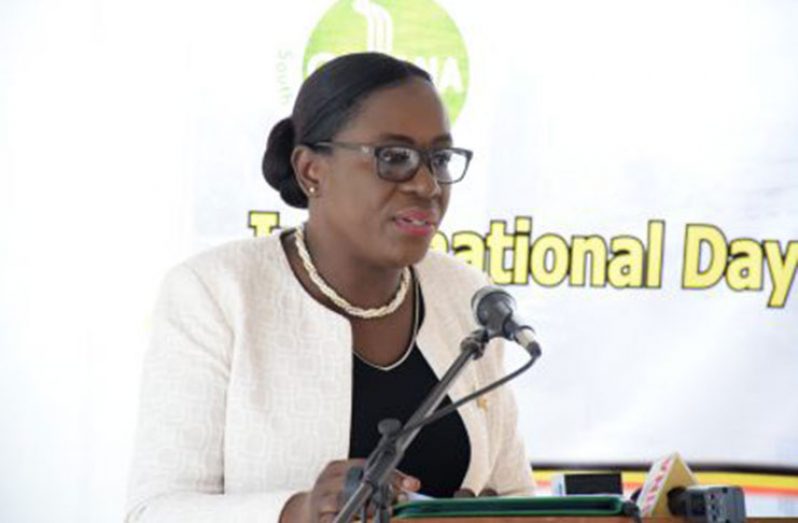Guyanese must embrace rich heritage — Minister Henry urges
GUYANA joined with other countries around the world on Tuesday to observe International

Day for Monuments and Sites under the theme: “Cultural Heritage and Sustainable Tourism.”
Minister within the Ministry of Education responsible for youth, culture and sports, Nicolette Henry, explained that the theme is “an important one in the context of conservation in the 21st century.” Cultural Heritage helps people to remember their cultural diversity, and its understanding develops mutual respect among different cultures, she said.
The National Trust of Guyana collaborated with the Department of Culture and the Department of Tourism in hosting an exhibition at the Guyana National Museum in recognition of International Day for Monuments and Sites. Minister Henry said the spot bridges both culture and tourism, because it is a very “significant cultural landscape in our city’s history, being the Company Path well and Lily pond, which is believed to have been constructed of bricks from Fort William Frederick, the first British fort constructed at the mouth of the Demerara River (Transport and Harbours). This clearly illustrates our rich and diverse heritage which we must take time to learn about, embrace and be proud of as Guyanese,” the minister stated.
A country’s cultural heritage is a unique and precious resource. Cultural sites provide enormous attraction for tourism around the world and can serve as powerful drivers for local and national economies, Minister Henry pointed out. She added that to tap into that potential, it is important that the sites are both accessible and well protected, and this is what the National Trust has been doing since its establishment in 1972.
The National Trust plays a “pivotal role in ensuring the country’s national patrimony is preserved,” Minister Henry noted. The record shows that over 400 sites and “things of national interest” have been documented on the Monuments’ Register, but there are still more that are yet to be discovered, Henry stated. Major works recently completed by the National Trust are the Damon Monument in Anna Regina; the Enmore Martyrs’ Monument; the Hogg Island Windmill, which is Dutch in origin, and the only type of structure of this nature that can be found in Guyana. In February, major work was done at the Rose Hall Sugar Estate Martyrs’ Monument.
During this month, Minister Henry said works will be done at the Highbury Memorial site in East Bank Berbice to celebrate the 179th anniversary of the arrival of Indian Indentured immigrants to British Guiana and to commemorate the centenary anniversary of the abolition of indentureship.
The Trust also contributes to the preservation of other cultural and historical structures such as St. George’s Cathedral and St. Peter’s Anglican Church located in Leguan. Last year, the Trust received international acclaim by copping the International Green Apple Award for the Built Environment and Architectural Heritage, South America Global Winner from the Green Organisation. In 2013, the Trust was given the Heritage Protection Award from the Caribbean Tourism Organisation.
Minister Henry and Director-General of the Department of Tourism, Donald Sinclair, commended the National Trust for collaborating with key stakeholders to mount this special exhibition in recognition of International Day for Monuments and Sites. Chairman of the National Trust, Lennox Hernandez, explained that the aim of the International Day for Monuments and Sites is to encourage local communities and individuals throughout the world to consider the importance of cultural heritage to their lives, identities and communities, and to promote awareness of its diversity and vulnerability and the efforts required to protect and conserve it.
The National Trust has embarked on several programmes, including hosting exhibitions, community outreach exercises, lectures, heritage education and radio programmes, among many others. Every year on April 18, countries worldwide celebrate International Day for Monuments and Sites which was approved by the 22nd UNESCO General Conference in 1983.
(GINA)



.jpg)








